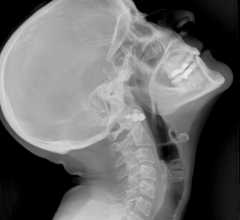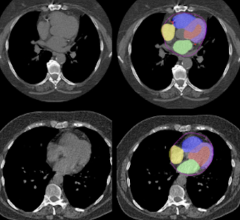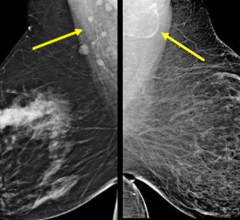CoronaryScore is a software program for detecting and scoring calcifications in the coronary arteries developed by the medical imaging company Image Analysis Inc.
Study results show technology can detect and score small plaques that are missed by current Agatston-based methods. In an early clinical study, it was found 25 percent of patients with a zero Agatston score in fact had small calcifications in the coronaries detected and scored by the Image Analysis software, the company said.
MDCT coronary artery calcium (CAC) scoring has become important in risk categorization for myocardial infarction and as a screening and staging test for CT angiography. But the technology has traditionally been plagued by a 2 to 5% false negative error for hard coronary events and somewhat lower for significant stenosis.
Using the software images are calibrated with a small cross-sectional calcium hydroxyappatite phantom that is scanned simultaneously with the patient. In addition, it uses the patient’s own blood pool/muscle to standardize the scans in a unique hybrid calibration program. Two scoring thresholds are automatically computed by the software in background mode for the specific patient, scanner, and even specific scan. The thresholds are determined from histogram analysis using statistical computations and variable connectivity criteria based on voxel size and image noise.
The software does not come with a manual, as the company feels it is easy to use and has a system of imbedded, animated help files.
To run the CoronaryScore software, the operator clicks at the origin of the left main artery and then the bifurcation of the LAD/Circ. Then the software automatically segments the heart; performs hybrid calibration; computes the two thresholds and plaque definition criteria; detects the plaques and identifies each to its coronary artery; calculates the calibrated mass score for each plaque, artery, and for the patient; calculates the Agatston and volume scores, either calibrated or not; and the mass plaques are sorted by size and displayed in a distribution graph. The plaque maps and scoring operation allows toggle on/off of the Agatston score and map and toggle on/off of plaque highlights for either Agatston or mass scores.
The automated software provides automated plaque detection and scoring (even with small voxel images) without operator interaction. The software displays them in a viewable 3D plaque map with each plaque shown in three planes and referenced to its exact 3D location in the volume data set. The manufacturer says the automation allows a 160-slice image set to be scored in under three seconds.
November 2008


 July 25, 2024
July 25, 2024 








